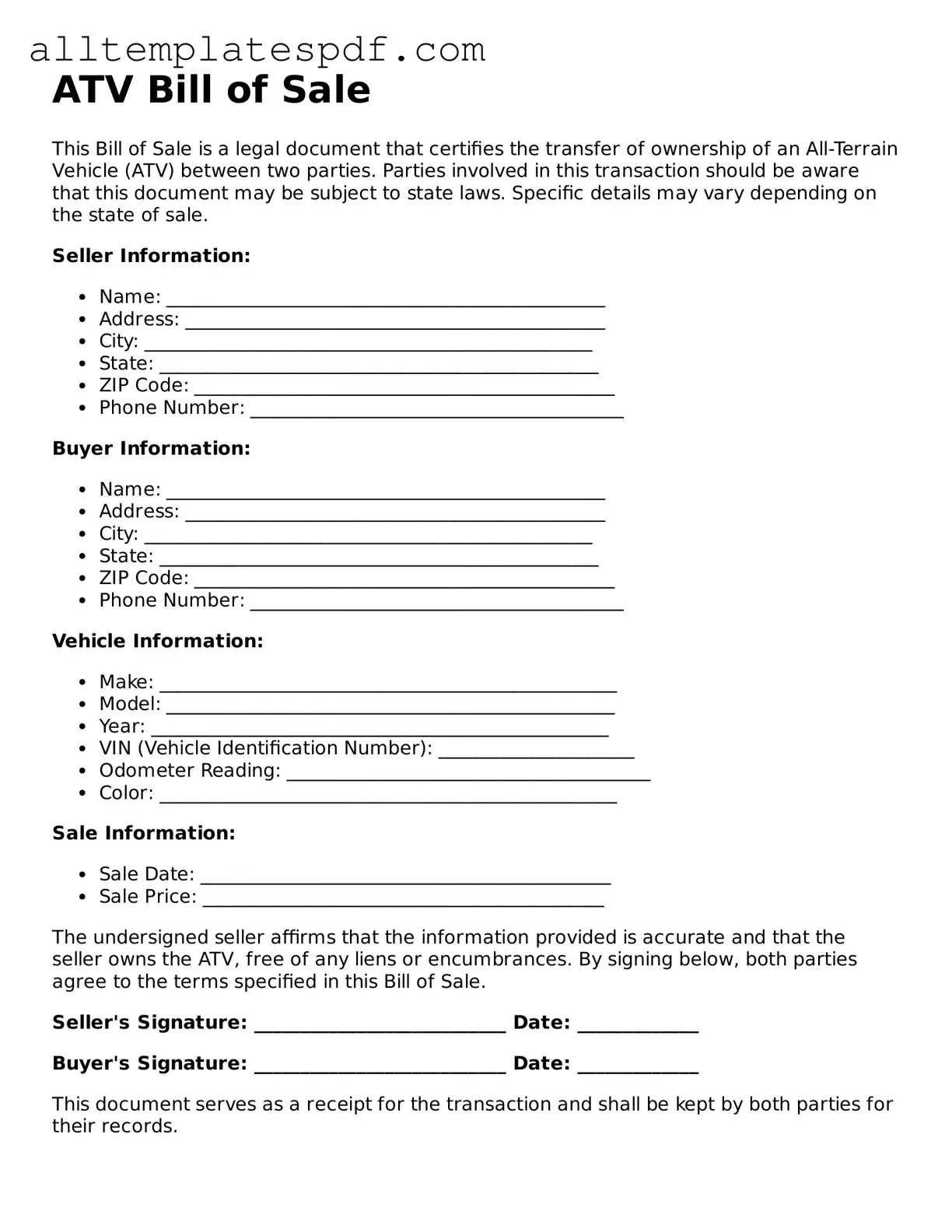When completing an ATV Bill of Sale form, many individuals overlook important details that can lead to complications later. One common mistake is failing to provide accurate vehicle identification information. This includes the ATV's make, model, year, and Vehicle Identification Number (VIN). Omitting or incorrectly entering this information can create confusion regarding ownership and registration.
Another frequent error involves not including the purchase price. The form should clearly state the amount paid for the ATV. Leaving this section blank can cause issues with tax authorities, as they may require proof of the sale price for tax assessment purposes. It's essential to document this information correctly to avoid future disputes.
Many people also neglect to sign the form. Both the buyer and seller must sign the Bill of Sale to validate the transaction. Without signatures, the document lacks legal standing. This oversight can hinder the transfer of ownership and complicate registration with the Department of Motor Vehicles (DMV).
Additionally, individuals sometimes fail to provide proper contact information. It’s crucial to include the full names, addresses, and phone numbers of both parties. In the event of any disputes or questions after the sale, having accurate contact details can facilitate communication and resolution.
Lastly, some individuals do not make copies of the completed Bill of Sale. Keeping a copy for personal records is important for both the buyer and seller. This document serves as proof of the transaction and can be useful for future reference, especially when registering the ATV or if any legal issues arise.
